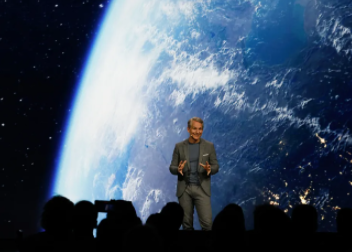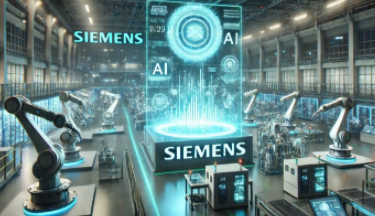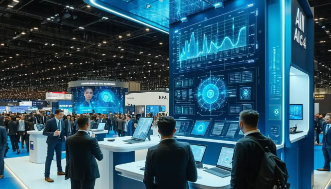Siemens drives industrial innovation with AI and green technology: full analysis of strategic layout by 2025
At the critical juncture of global industrial transformation in 2025, Siemens will continue to consolidate its leadership position in industrial automation and digitization through innovation such as generative AI, digital twins, and low-carbon technologies, driven by the dual wheels of "integration of data and reality" and "sustainable development". The following analyzes Siemens' latest industrial trends from three dimensions: technological breakthroughs, ecological cooperation, and green practices.

1、 Generative AI Refactoring Industrial Scenarios: An Intelligent Transition from "Dialogue" to "Action"
At the 2025 World Artificial Intelligence Conference (WAIC), Xiao Song, Global Executive Vice President and Chairman of Siemens in China, revealed the revolutionary progress of industrial AI: its world's first generative AI product for industry has been upgraded from a "virtual assistant" to an "intelligent agent system". This system can run through the entire chain of planning, research and development, production, and operation. It can not only generate code, but also independently disassemble tasks, analyze root causes, propose solutions, and execute instructions. For example, in a certain automotive parts company, the system increased inventory turnover by 35% through dynamic BOM configuration, and achieved a 70% improvement in design iteration efficiency in a semiconductor factory.
At present, more than 200 companies and over 150000 engineering personnel worldwide have connected to the system, covering high-end fields such as aerospace, automotive electronics, and semiconductors. The collaboration between Siemens and NVIDIA has further deepened, with the Teamcenter digital reality viewer supported by Omniverse introducing physics based visualization capabilities into PLM systems, resulting in a 40% increase in cross departmental collaboration efficiency.
2、 Localization Innovation Acceleration: 18 New Products Define 'Chinese Speed'
In March 2025, Siemens released 18 new industrial automation products for the Chinese market in Shanghai, of which 16 achieved full value chain local research and development. The new product covers core areas such as PLC, servo drive, predictive maintenance software, etc
S7-1200 G2++controller: supports 32 synchronous axes, paired with S200C+1FL1 servo system, which increases equipment operating speed and accuracy by 10% and 15% respectively;
SiePA Lite predictive maintenance software: combining industry mechanisms and AI algorithms to achieve precise equipment fault location, reducing fault response time by 60%;
E-Carbon Box: Integrating enterprise carbon data through a "cloud edge end" architecture, helping a steel company reduce carbon dioxide emissions by 500000 tons annually.
Since its establishment in 2024, Siemens China Innovation Products Division has seen a year-on-year increase of 67% in research and development investment, and has launched new products on a quarterly basis. The motors and drive equipment produced by its new factory have been exported to 12 countries and regions, confirming the global competitiveness of "Chinese style innovation".

3、 Green and low-carbon practice: Digital technology empowers the entire industry chain to reduce carbon emissions
The cooperation between Siemens and Hebei Iron and Steel Group has become a benchmark for industrial low-carbon transformation. Through the "WisCarbon Carbon Neutrality Digital Platform", Hebei Iron and Steel has achieved precise carbon footprint accounting, increased the recycling rate of scrap steel to 60%, achieved a clean energy utilization rate of 10%, and reduced the carbon footprint of its products by 20%. In Tangshan Iron and Steel New Area, the energy-saving optimization project of air compressor station combining mechanism simulation and AI algorithm has reduced the overall energy consumption by 5%.
Siemens' own carbon reduction achievements are also significant: since the 2019 fiscal year, its carbon emissions have been reduced by 60%, achieving the target of reducing emissions by 55% by 2025 ahead of schedule. In the fiscal year 2024, its products helped customers avoid emitting 144 million tons of greenhouse gases, far exceeding its own value chain emissions of 121 million tons.
4、 Ecological Co construction: Open Platform Driven Industrial Collaboration
The Siemens Xcelerator platform, as an open digital business platform, has attracted over 200 ecosystem partners covering fields such as robotics, industrial software, and low-carbon solutions. Recent highlights of cooperation include:
Jointly develop AIoT predictive maintenance solution with Zongxing Technology: integrate ZETA low-power communication technology with Siemens Industrial IoT platform to achieve real-time monitoring and intelligent analysis of equipment status;
Collaboration with JetZero Aviation: Utilizing digital twin technology to design wing body fusion aircraft, aiming to achieve zero carbon emissions and a 50% increase in fuel efficiency by 2035;
Launched the "Supply and Demand Intelligent Control" platform with DingTalk: aimed at equipment manufacturing enterprises, integrating supply chain full process management and shortening delivery cycles by 30%.

5、 Future outlook: Deep integration of AI and sustainable development
Siemens is integrating generative AI into the Xcelerator platform to promote the popularization of industrial metaverse technology. Through the Siemens Startup Support Program, small and medium-sized enterprises can access cutting-edge technologies such as AI and digital twins at low cost. At the same time, its "Deep Insight Report on Enterprise Green Going Global" provides carbon management system construction guidelines for over 300 Chinese companies, helping to cope with international carbon border adjustment mechanisms such as the EU CBAM.
Siemens' practice shows that industrial transformation has entered a new stage that emphasizes both "AI implementation" and "green depth". By expanding the breadth of its technological base and deeply exploring its application scenarios, Siemens is building a more efficient and sustainable future for global industry.